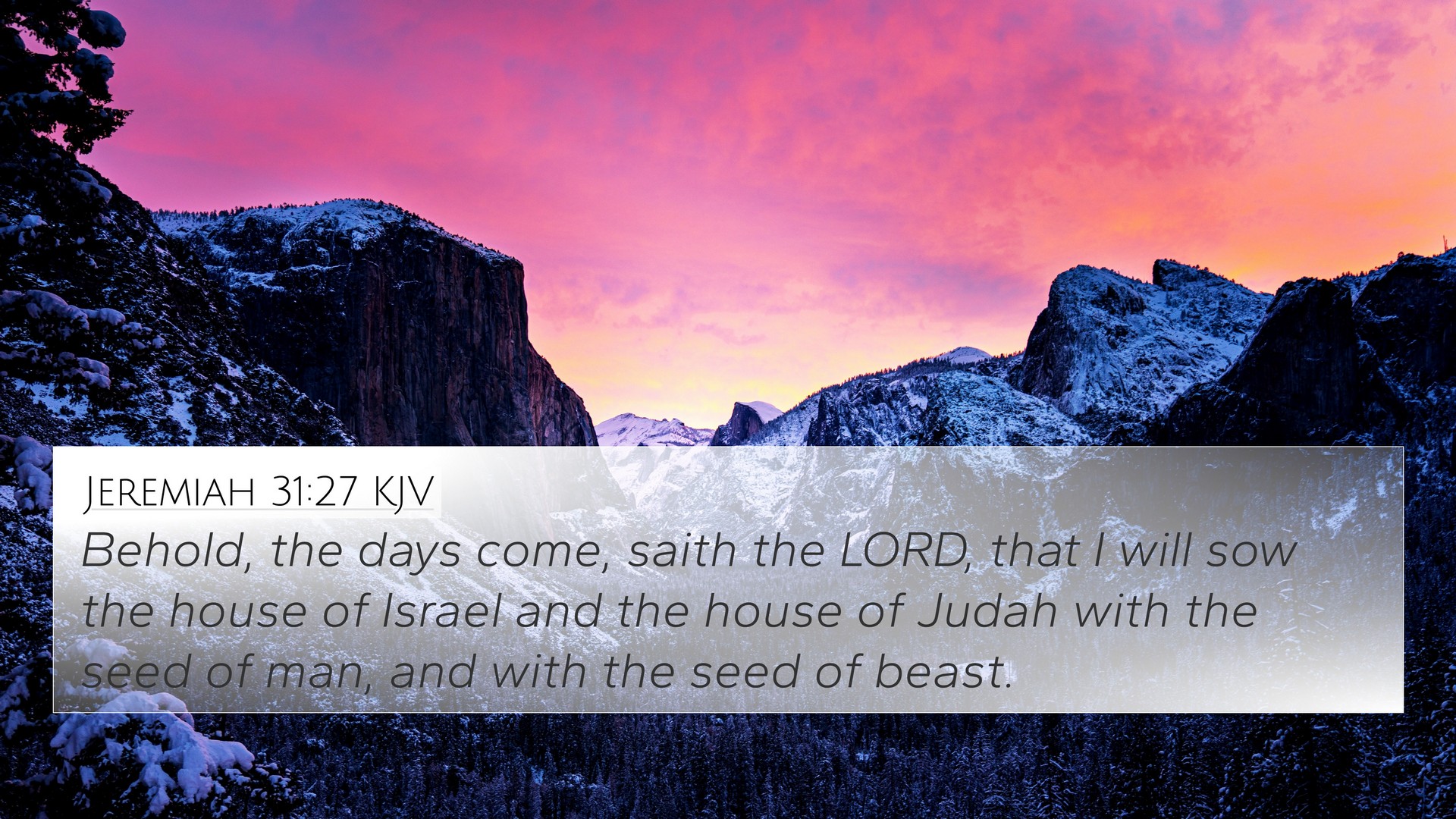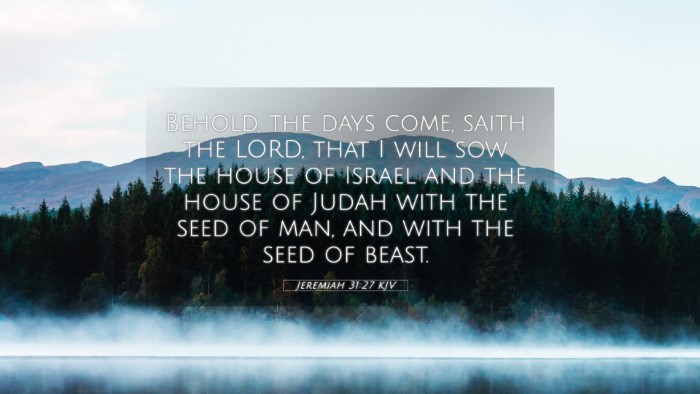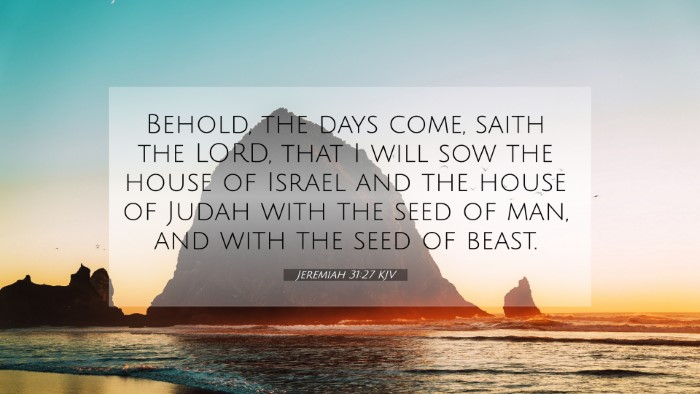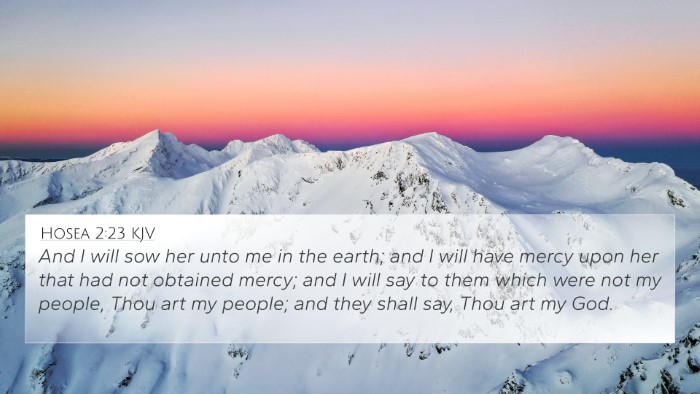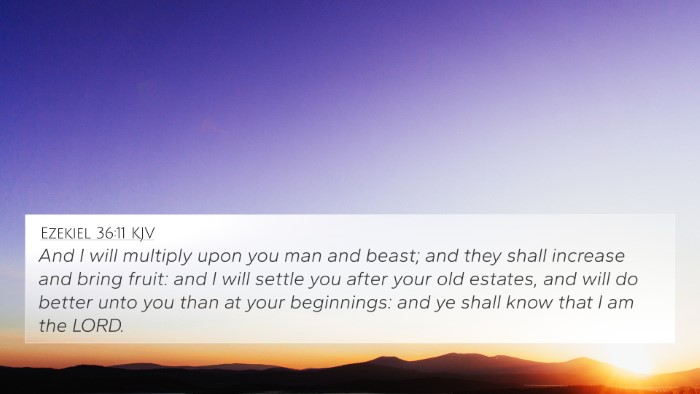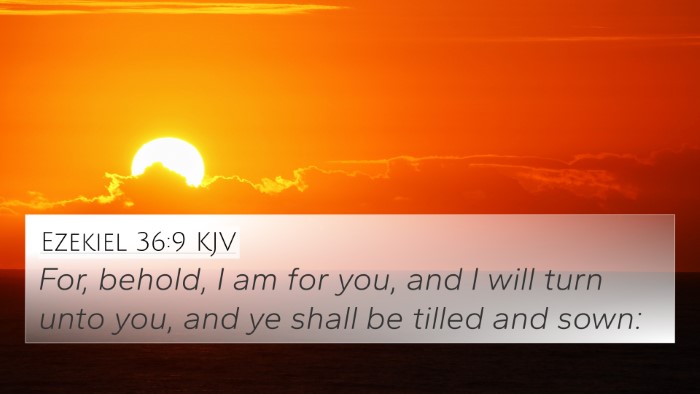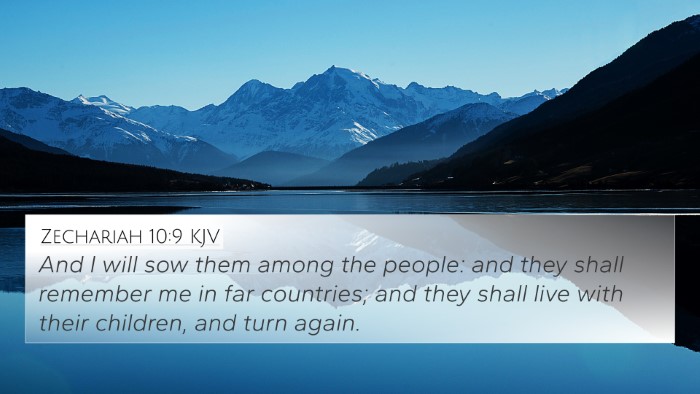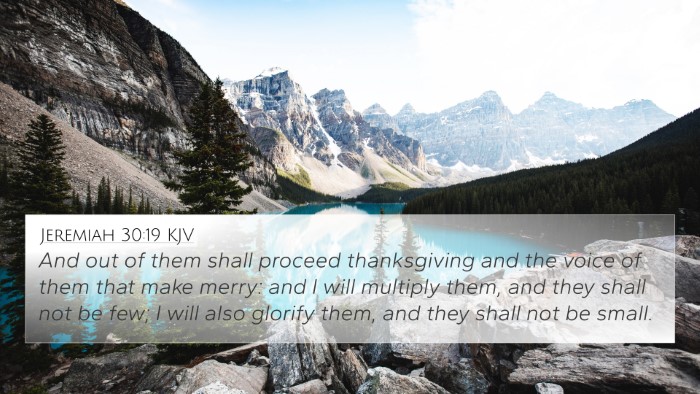Understanding Jeremiah 31:27
Verse: "Behold, the days come, saith the Lord, that I will sow the house of Israel and the house of Judah with the seed of man and with the seed of beast." (Jeremiah 31:27)
Context and Overview
The verse from Jeremiah comes in a section where God promises restoration to Israel after a period of exile and judgment. This promise is not just about the physical return of the Israelites to their land but also speaks to a deeper spiritual renewal and the establishment of a new covenant.
Interpretation from Commentaries
-
Matthew Henry:
Henry emphasizes that this verse signifies God's intention to restore not only the people of Israel but also their societal and spiritual foundations. The metaphor of sowing indicates a new beginning and growth, symbolizing the fertile future God has in store for them.
-
Albert Barnes:
Barnes interprets this action of sowing the house of Israel and Judah as a metaphor for planting their families and livelihoods, hinting at the significant blessedness that will accompany this new sowing. This suggests a plentiful increase in both population and prosperity.
-
Adam Clarke:
Clarke reflects on God's promise as a fulfillment of His everlasting covenant with Israel. The use of "seed" also implies a restoration of divine favor, signifying both physical descendants and spiritual rejuvenation, extending even to their livestock, reflecting a holistic revival.
Cross-Referencing Biblical Texts
To fully understand the implications of Jeremiah 31:27, it is essential to explore its connections with other Scripture. Here are key cross-references:
- Genesis 48:16: This passage highlights the everlasting covenant's significance, relating to the future generations of Jacob's descendants.
- Isaiah 61:9: This verse speaks of the descendants of God’s people being known among the nations, mirroring the promise of growth and restoration in Jeremiah.
- Ezekiel 34:29: Yehovah promises a fruitful land where His people will flourish, reinforcing the themes of restoration found in Jeremiah.
- Romans 11:1-5: Paul’s discourse on the remnant of Israel connects to Jeremiah’s assurance of preservation and renewal of Israel.
- Hosea 2:23: The promise of God sowing His people again links back to the idea of restoration found in Jeremiah.
- John 12:24: Here, Jesus refers to the necessity of a seed dying to bring forth new life, connecting well with the agricultural metaphor presented by Jeremiah.
- Galatians 6:7: The principle of sowing and reaping in the New Testament resonates with Jeremiah's prophetic claim, emphasizing the inevitability of God's providence.
Thematic Connections
This verse can be seen as part of a broader theme of restoration and new beginnings, prevalent throughout both the Old and New Testaments. Below are points illustrating key thematic connections:
- Restoration of Israel: This theme is consistently present, as seen from the promises in all major and minor Prophets.
- New Covenant: Jeremiah speaks of a new covenant (Jeremiah 31:31), establishing a deeper theological context tied with Christian beliefs about Jesus.
- Divine Providence: God's sovereignty over the faithful remnant persists, suggesting that He will always preserve a group of people for His purpose.
- Spiritual Growth: Just as physical restoration is promised, it also implies that spiritual vitality and growth will accompany the people’s return.
Tools for Bible Cross-Referencing
To delve deeper into the connections and themes of Jeremiah 31:27, various resources can be useful:
- Bible Concordance: Helps to locate specific words and their occurrences throughout the Bible.
- Bible Cross-Reference Guide: A valuable tool to discover related verses and passages.
- Cross-Reference Bible Study: Techniques for studying interconnected verses for deeper understanding.
- Bible Reference Resources: Essential for thorough examinations of themes and threads across biblical text.
- Bible Chain References: Convenient for linking multiple passages that support a particular theme or concept.
Conclusion
Jeremiah 31:27 reminds believers of God’s unfailing commitment to His creation and the hopeful prospect of renewal and growth. By studying this verse through the lens of noted commentaries and engaging with cross-references, one deepens their understanding of God’s promises and the enduring relevance of those promises for our current spiritual journey.
